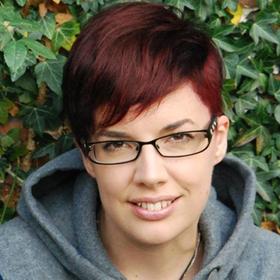 |
|
Marieke Nijkamp was born and raised in the Netherlands. A lifelong student of stories, language and ideas, she is more or less proficient in about a dozen languages and holds degrees in philosophy, history and medieval studies. This Is Where It Ends is her debut novel. This interview with Nijkamp was conducted by her editor, Annette Pollert-Morgan.
What inspired you to write This Is Where It Ends?
Several high-profile school shootings and a deep longing to understand not only the situation, but especially the human aspect of it. I wanted to understand the stories behind a school shooting. And This Is Where It Ends allowed me to create and explore those stories.
What research did you do to write the novel?
For every hour I spent writing, I spent another (at least) researching. I read firsthand accounts of shootings, I listened to 911 calls, I plowed through hundreds of pages of investigative reports, I talked to people, I kept up with news and social media feeds as active shooter situations emerged, I familiarized myself with the psychology of being held at gunpoint. As much as possible, I immersed myself in what we know about school shootings (which is both a lot and very little). And I tried to translate that to the book.
At the same time, of course, This Is Where It Ends is still fiction. The story isn't about the technicalities of a shooting; it's about four teens in a harrowing situation whose world is being turned upside down. So I allowed for that, too, in the way the story unfolded. But I wanted to ensure that any poetic license remained respectful to real life.
This Is Where It Ends takes place over 54 minutes and is narrated by four different characters. How did you track what each character was doing from moment to moment and keep the voices distinct? What was that writing process like?
I'm a plotter at heart, and while plotting this story, I created a massive spreadsheet that tracked, minute by minute, what happened to each of the main characters as well as the shooter and several other prominent players. It allowed me to keep track of the various arcs of the story, as well as the way different scenes influenced each other. From there, I wrote the story four times, from all four different perspectives to keep the voices distinct, and only then did I start bringing it all together.
Given all of the different characters in the novel, do you have a favorite? Why is that character your favorite?
This is such a cruel question, because I spent so much time with each of these characters and I've grown so close to them.☺ But if I had to choose, I wouldn't go for one of the four main characters. I would have to say Fareed, who happens to be outside the auditorium when the shooting starts and drops everything because his best friend's sister is in danger. He understands what needs to be done to help a friend in need, and does it, no matter the cost.
What would you like readers to take away from This Is Where It Ends?
Hope. This Is Where It Ends is no easy story. Autumn, Claire, Sylv and Tomás face what may well be every student's worst nightmare. A situation where nothing is safe and survival seems impossible. But it's not a totally bleak story. There's anger but also friendship. Revenge but also love. There's family. There's sacrifice. And, ultimately, there's the belief that even when the world seems to have stopped turning, when everything has fallen apart, the darkness is never absolute. There is always hope.

